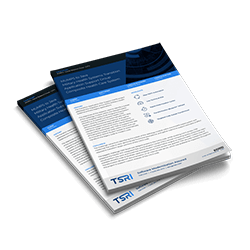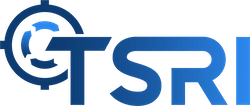Displaying items by tag: multitier
COBOL/CICS & JCL to Java - US Customs and Border Protection
The United States Customs and Border Protection agency contracted with The Software Revolution, Inc. (TSRI) for a Phase 1 assessment as well as a conversion and modernization of the Customs and Border Protection (CBP) Cargo ACS/Quota (QUOTA) Conversion Pilot code from COBOL/CICS to Java or .Net.
 |
Customer: US Customs and Border Protection Source & Target Language: COBOL/CICS & JCL to Java Lines of Code: 163,700 Duration: 4 Months Services: Automated Code Transformation, Automated Refactoring, Integration and Testing Support, Internal and External Dependancy Analysis, Transformation Blueprint®, Application "As-Is" Blueprint®, Target Architecture Design
|
- sql
- transformation blueprint
- Platform Migration
- modernization
- Software Code Modernization
- Refactoring
- Code Documentation
- modernize
- migration
- Data
- Data Migration
- assessment
- architecture
- multitier
- Microservices
- Micro Services
- monolithic
- Security Refactoring
- application modernization
- System Modernization
- Object Oriented
- Quality Output
- Asis Blueprint
- Software Modernization
- Modern Architecture
- ArchitectureDriven
- Software Transformation
- transformation
- cloudnative
- containerized
- modularized
- cobol
- COBOL to Java
- COBOL CICS
- cics
- jcl
- hyperlinked source code
- cloudbased
- Internal and External Dependency Analysis
- target architecture
- Target Architecture and Design
- Cloud Native
- Objectoriented
- fully automated
- Customs and Border Protection
- Border Patrol
PL/1 & JCL to C# - KMD e-Boks
Originally developed by Denmark-based KMD in 2001 as a mainframe software application, the e-Boks system became more difficult and costly to maintain over time. The original platform also lacked the agility to expand to additional countries at scale and was not agile enough to expeditiously react to business changes. TSRI and KMD were able to modernize the e-Boks application from its original IBM PL/1 legacy code in a monolithic architecture to a modern, multi-tier application in a modern computing environment, running .NET, with no impact on the business and end-user experience. As a result, e-Boks has the potential to save more than 50-60 percent per year in operations and maintenance costs.
 |
Customer: KMD and The Government of Denmark Source & Target Language: PL/1 & JCL to C# Lines of Code: 974,201 (781,893 - PL/1 and 192,308 - JCL) Duration: 6 Months Services: Transformation Blueprint®, Automated Code Transformation, Automated Refactoring, Integration and Testing Support
|
- sql
- transformation blueprint
- Platform Migration
- modernization
- Software Code Modernization
- Refactoring
- Code Documentation
- modernize
- migration
- Data
- Data Migration
- assessment
- architecture
- multitier
- Microservices
- Micro Services
- monolithic
- Security Refactoring
- application modernization
- System Modernization
- Object Oriented
- Quality Output
- Asis Blueprint
- Software Modernization
- Modern Architecture
- ArchitectureDriven
- Software Transformation
- transformation
- cloudnative
- containerized
- modularized
- PL/1
- PL 1
- pl1
- PL/1 to C#
- PL 1 to C#
- PL1 to C#
- to C#
- agility
- agile
- mainframe software
- Mainframe application
- IBM PL/1
- eBoks
- api
- api’s
- Error testing
- db2
- DB2 Database
- VSAM
- VSAM Database
- DB2 and VSAM databases to Microsoft SQL Server
- MS SQL Server
- performance
- Monolithic to Service Oriented
- Serviceoriented
- multitier architecture
- automated tests
- comparative testing
- regression testing
- Reduced maintenance costs
- reduced costs
- reduced mainframe costs
COBOL & JCL to Java & Python - Deutsche Bank KM
Deutsche Bank's relatively reliable mainframe infrastructure utilized COBOL and JCL languages running DB2 and VSAM flat-file databases for a variety of their key financial applications. The company’s leadership knew they would need to be cloud-enabled with a modern architecture to stay relevant for its customers and ongoing market needs. Following a successful proof of concept against other well-known industry soluitons, TSRI emerged as the best solution (highest quality output and most advanced architecture) for the full modernization effort of Deutsche Bank’s internal KreditManager application. An application which gives the company’s employees all of the tools they need to handle all of the company’s loan, credit and mortgage applications.
 |
Customer: Deutsche Bank Source & Target Language: COBOL & JCL to Java & Python Lines of Code: 397,222 (383,358 - COBOL, 13,864 - JCL) Duration: 12 Months Services: Automated Code Transformation, Automated Refactoring, Integration and Testing Support, SonarQube Quality Refactoring, Code-Specific Adaptation, Database Migration, Transformation Blueprint®, Application "As-Is" Blueprint®
|
- sql
- transformation blueprint
- Platform Migration
- modernization
- Software Code Modernization
- Refactoring
- Code Documentation
- modernize
- migration
- Data
- Data Migration
- assessment
- architecture
- multitier
- Microservices
- Micro Services
- monolithic
- Security Refactoring
- application modernization
- System Modernization
- Object Oriented
- Quality Output
- Asis Blueprint
- Software Modernization
- Modern Architecture
- ArchitectureDriven
- Software Transformation
- transformation
- cloudnative
- containerized
- modularized
- cobol
- mainframe
- COBOL to Java
- Java
- jcl
- batch
- JCL to Python
- to Python
- db2
- DB2 Database
- VSAM
- VSAM flatfile
- flatfile
- Banking System
- Mortgage System
- Credit Manager
- Credit System
- KreditManager
- Kredit Manager
- Openshift
- Open Shift Cloud
- Open Shift
- Monolithic COBOL
- COBOL Modernization
- JCL Modernization
- COBOL Conversion
- Money Savings
- Business Case
- Private Cloud
- OnPremis Cloud
- DB/2 and VSAM
- ORacle Database
- OpenShift onpremise cloud
- stepwise
- input/output (DIO) layer
- DIO
- Loan application system
- SonarQube
- Quality Standards
- SonarQube Quality
- Pointers
- Error Remediation
MUMPS to Java - Veterans Health Administration (VHA)
This case study documents technologies, processes, and methods of the timely and 100% automated conversion of a portion of the VHA (Veterans Health Administration) Information Systems and Technology Architecture (VistA) system, written in 2.1 million lines of MUMPS. The modernized module resulted in object-oriented and highly maintainable Java compatible with the J2EE framework. VistA is the core Electronic Healthcare Recordkeeping (EHR) system for the VHA hospital system, which provides EHR record keeping for more than 4.5 million veterans.
 |
Customer: Veterans Health Administration and SAIC Source & Target Language: Mumps to Java Lines of Code: 300,000 Duration: 5 Months Services: Automated Code Transformation, Automated Refactoring, Integration and Testing Support, Engineering Support, Transformation Blueprint®, Application "As-Is" Blueprint®
|
- sql
- transformation blueprint
- Platform Migration
- modernization
- Software Code Modernization
- Refactoring
- Code Documentation
- modernize
- migration
- Data
- Data Migration
- assessment
- architecture
- multitier
- Microservices
- Micro Services
- monolithic
- Security Refactoring
- application modernization
- System Modernization
- Object Oriented
- Quality Output
- Asis Blueprint
- Software Modernization
- Modern Architecture
- ArchitectureDriven
- Software Transformation
- transformation
- cloudnative
- containerized
- modularized
- mumps
- Mumps to Java
- to Java
- saic
- MCode
- M Code
- vha
- healthcare
- Healthcare systems
- Mumps to
- veteran
- Veterans Administration
- VA
- Veterans Health Administration
- M Software
- VistA
- ANSI Standard
- VA Medical Facilities
- VHA Office of Information
- j2ee
- J2EE Framework
- VetVistA environment
- HealtheVet
- Fast
Housing & Urban Development (HUD) - COBOL to Java CHUMS, LOCCS, F42d/CAIVRS Modernization
Using money from the Technology Modernization Fund (TMF) under the Modernizing Government Technology Act disbursed by the General Services Administration (GSA) of the U.S. government, the Department of Housing and Urban Development (HUD) sought to modernize several of its remaining critical systems on a legacy Unisys mainframe written in COBOL with a flat-file DMS-II database.
 |
Customer: Department of Housing and Urban Development and Salient CRGT Source & Target Language: Unisys COBOL to Java Lines of Code: 1.3 Million Duration: 8 Months Services: Automated Code Transformation, Automated Refactoring, Integration and Testing Support, Enginerring Support, Software Maintenance Agreement, Transformation Blueprint®, Application "As-Is" Blueprint®,
|
- sql
- transformation blueprint
- Platform Migration
- modernization
- Software Code Modernization
- Refactoring
- Code Documentation
- modernize
- migration
- Data
- Data Migration
- assessment
- architecture
- multitier
- Microservices
- Micro Services
- monolithic
- Security Refactoring
- application modernization
- System Modernization
- Object Oriented
- Quality Output
- Asis Blueprint
- Software Modernization
- Modern Architecture
- ArchitectureDriven
- Software Transformation
- transformation
- cloudnative
- containerized
- modularized
- unisys
- UNISYS COBOL
- cobol
- automated
- Salient
- partner
- Rapid Completion
- Minimal Code Freeze
- DMSII
- DMS 2
- relational database
- Relational Database to Oracle SQL Server
- Oracle SQL Server Database
- TMF
- Technology Modernization Fund
- Modernizing Government Technology Act
- General Services Administration
- gsa
- HUD
- Housing and Urban Development
- System Integrator
- SI
- mainframe
- Unisys Mainframe
- Credit Application System
- Underwriting Management System
- Credit System
- Financial System
- Unisys DMS
- Duplicate Records
- Dead Code
- Redundant Code
- into production
- framework
Video: Using Automation to Quickly and Accurately Move to a Multi-Tier Environment
As Scott notes in this video, the latest in our Modernizing for the Future series for undertaking a cloud modernization, “One of the benefits associated with using an automated technology is that none of it is done by hand.” In this video Scott introduces the idea of automation when it comes to modernization and how taking this avenue will preserve the functionality and logic of the legacy applications. The benefit is that the application will operate exactly the same way it did previously, but with capabilities to expand into a more tiered approach so the application can take advantage of the best the cloud has to offer.
Originally aired live on May 18, 2021.
Additionally, having the automated transformation preserve the functionality means once organizations are ready to put the cloud applications into production, the data layer remains consistent so this can be done gradually with very little downtime in the production environments. That minimal business disruption greatly reduces the risk of data loss and technical failures. And from there, automated and semi-automated refactoring can begin to improve the quality and functionality of the application—all in a cloud environment.
Be sure to view our other videos in this series:
Videos 1 & 2: “Setting Project Scope” and “Setting Up Development Sandboxes”
Video 3: Selecting Cloud Vendors and Your Target Language
As always, TSRI can help answer any questions you may have about modernization, automation, and making sure your systems are ready to deploy in modern computing environments.
---
TSRI is Here for You
As a leading provider of software modernization services, TSRI enables technology readiness for the cloud and other modern architecture environments. We bring software applications into the future quickly, accurately, and efficiently with low risk and minimal business disruption, accomplishing in months what would otherwise take years.

